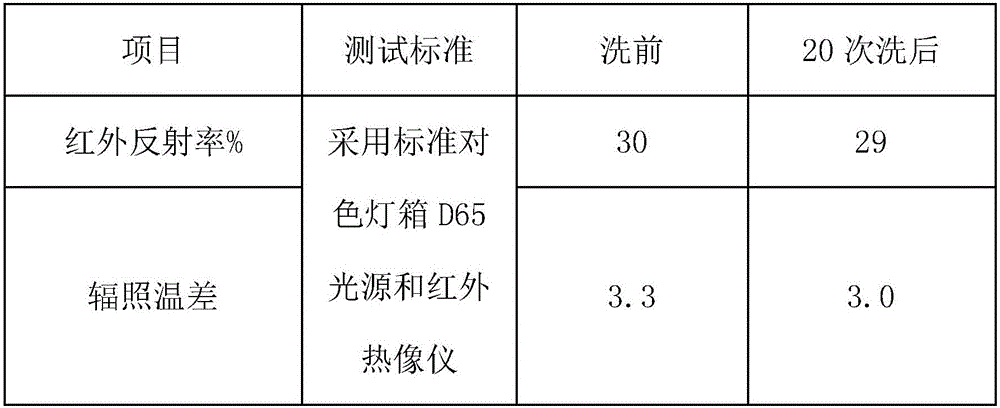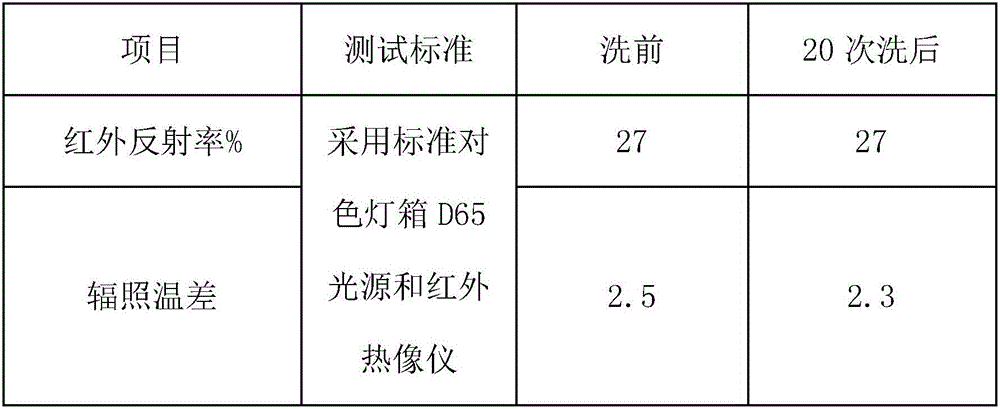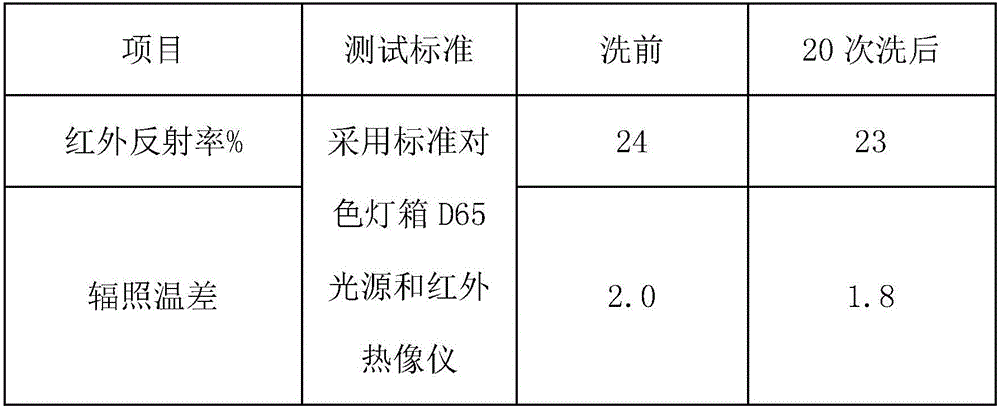Heat-reflection fabric and application thereof to clothes
A technology of heat reflection and fabric, applied in the direction of one-component polyolefin rayon, one-component polyamide rayon, one-component polyester rayon, etc. The fabric is breathable, moisture-permeable and comfortable, so as to reduce the effect of heat absorption
- Summary
- Abstract
- Description
- Claims
- Application Information
AI Technical Summary
Problems solved by technology
Method used
Image
Examples
Embodiment example 1
[0020] Fabric: pongee;
[0021] Yarn: 50D / 36F heat reflective polyester yarn
[0022] The content of each component in the heat-reflecting particles in the yarn is as follows: 80% of nano-titanium dioxide, 0% of aluminum oxide, 0% of zinc oxide, and 20% of indium tin oxide.
[0023] Table 1 Functional test results
[0024]
Embodiment example 2
[0026] Fabric: heat reflective 40D nylon double line grid;
[0027] Yarn: 40D / 36F heat reflective nylon yarn
[0028] The content of each component in the heat-reflecting particles of the yarn is as follows: 60% of nano titanium dioxide, 10% of aluminum oxide, 15% of zinc oxide and 15% of indium tin oxide.
[0029] Table 2 Functional test results
[0030]
Embodiment example 3
[0032] Fabric: heat reflective jersey;
[0033] Yarn: 50D / 36F heat reflective polyester yarn;
[0034] The content of each component in the heat-reflecting particles of the yarn is as follows: 40% of nano-titanium dioxide, 20% of aluminum oxide, 20% of zinc oxide, and 20% of indium tin oxide.
[0035] Table 3 Functional test results
[0036]
PUM
 Login to View More
Login to View More Abstract
Description
Claims
Application Information
 Login to View More
Login to View More - R&D
- Intellectual Property
- Life Sciences
- Materials
- Tech Scout
- Unparalleled Data Quality
- Higher Quality Content
- 60% Fewer Hallucinations
Browse by: Latest US Patents, China's latest patents, Technical Efficacy Thesaurus, Application Domain, Technology Topic, Popular Technical Reports.
© 2025 PatSnap. All rights reserved.Legal|Privacy policy|Modern Slavery Act Transparency Statement|Sitemap|About US| Contact US: help@patsnap.com



